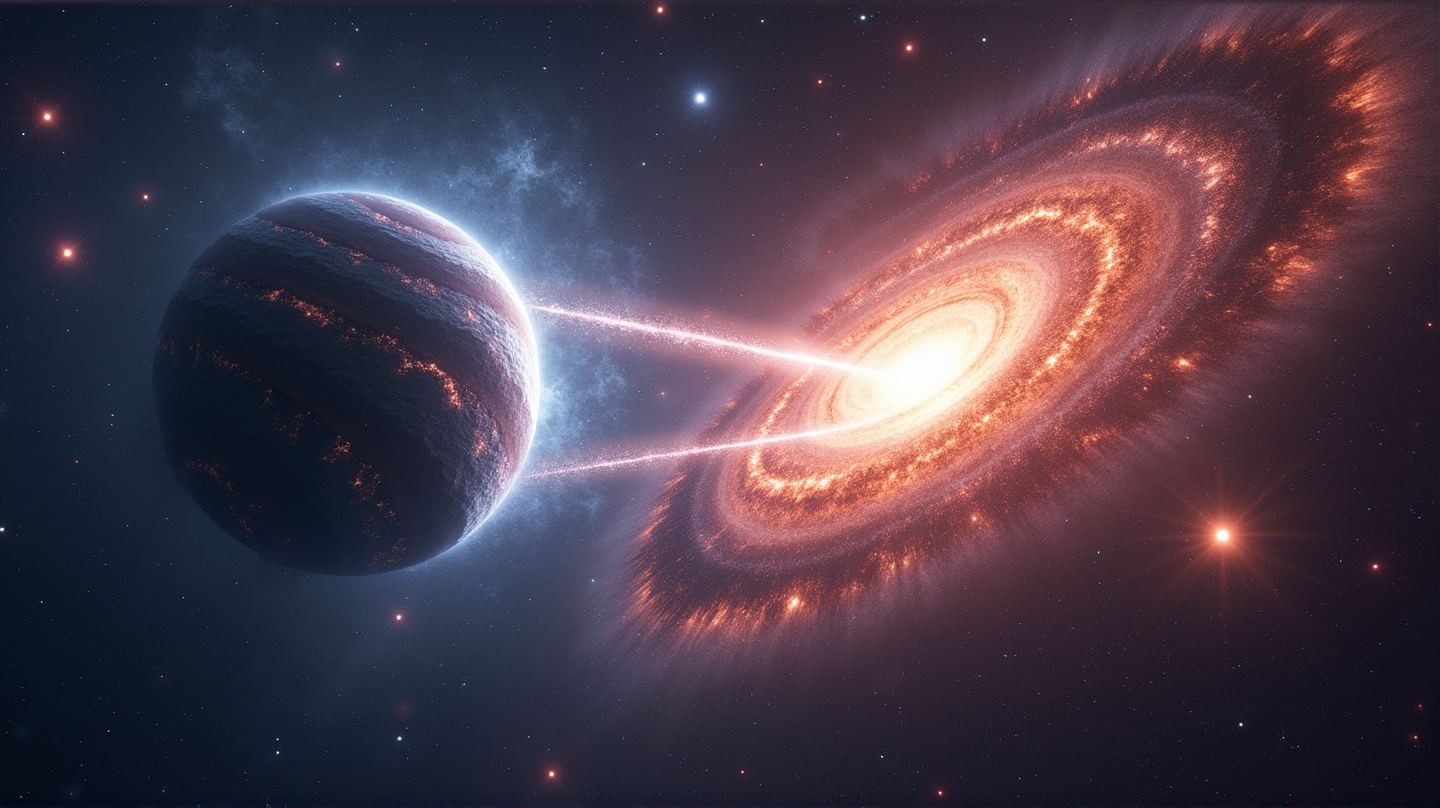Unveiling the First-Ever Cosmic Joust Between Galaxies: A Spectacular Astronomical Duel
Galaxies duel at 1.1 million mph in a 'cosmic joust' as astronomers witness an intergalactic collision for the first time.

In the vast and enigmatic cosmos, two galaxies have been caught mid-collision in what astronomers from the Paris Institute of Astrophysics and the French-Chilean Laboratory for Astronomy have described as a “cosmic joust.” This remarkable event, uncovered through the meticulous observance of ground-based telescopes over the course of four years, has captivated the scientific community with its dramatic display of intergalactic influence.
The Duel of Distant Neighbors
According to WENY, the monumental encounter, persisting over 11 billion light-years away, captures galaxies hurtling towards each other at almost unfathomable speeds—over 1.1 million miles per hour. One of these stellar behemoths bombards its opponent with beams of radiation, emanating from its quasar-powered bright core, disrupting its adversary’s star-forming capabilities. This demonstration of galactic warfare provides insight into a universe from eras past, a time when merging galaxies and prolific star formation occurred more frequently.
Peering Into the Past With Precision
Utilizing the European Southern Observatory’s Very Large Telescope alongside the Atacama Large Millimeter/submillimeter Array, the research team unveiled an attacking galaxy whose quasar—a supermassive black hole’s radiant heart—effusively unleashes ultraviolet waves. This cosmic battle’s unique illumination serves as a rare opportunity for astronomers to observe the quasar’s effect on molecular gas, a phenomenon until now only theorized about but never observed firsthand.
Light Shed on Cosmic Evolution
The breathtaking spectacle of galactic dueling challenges researchers to unravel the mysteries of our universe’s formative years. Despite the ongoing expansion of the universe, which has resulted in less frequent events of such gravitational combat, Nature’s publication offers a rare glimpse into a vibrant time historians and scientists dub “the noon of the universe.” Here, galaxies frequently collided, merging into larger cosmic entities.
Future Encounters Beyond Our Horizon
As perpetual study illuminates the universe, investigating these ancient quarrels continues to unveil evolutionary milestones. Today, the Milky Way’s future includes a forecasted unification with the Andromeda galaxy in a dance of cosmic creation. Within the context of this astronomical wrestle, future discoveries will increasingly uncover the chain of galactic lineage, a captivating narrative that fosters deeper understanding and wonder.
As the light from these galaxies’ tumultuous engagement took billions of years to reach Earth, one can only speculate about the conclave’s outcome. Yet, as the cosmic joust marks a golden period in this field of research, enthusiasts and scholars are encouraged to persistently marvel at the universe’s grand tapestry.

